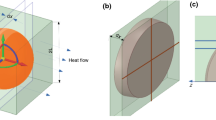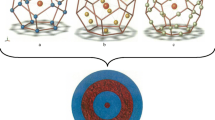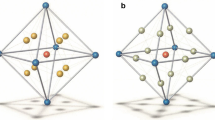Abstract
The influence of particle shape and orientation on the thermal conductivity of low volume, particulate composites was examined through two-dimensional numerical simulations using the finite element method, FEM. The simulations demonstrate that the conductivity of such composites is influenced by not only the relative volume and conductivity of the embedded particles, but also their general shape, elongation, and orientation relative to the direction of global heat flow. The functional form of the Halpin–Tsai equation was utilized to characterize the composite thermal conductivity through a derived expression of the geometric distribution factor, ζ. The proposed expression of ζ differs from commonly assumed values and is shown to be highly dependent on the shape of the embedded particles. This approach was further extended to examine and explicitly characterize the anisotropic behavior of composites containing multiple, randomly distributed particles of a uniform size and shape based on their relative orientation. This work demonstrates the viability of using numerical tools to examine composites with complex geometries.
















Similar content being viewed by others
References
Voigt W (1906) Bestimmung der Elastizitätskonstanten von Eisenglanz. Ann Phys 327:129–140
Reuss A (1929) Berechnung der Fließgrenze von Mischkristallen auf Grund der Plastizitätsbedingung für Einkristalle. ZAMM 9:49–58
Hill R (1965) A self-consistent mechanics of composite materials. J Mech Phys Solids 13:213–222
Kuster GT, Toksöz MN (1974) Velocity and attenuation of seismic waves in two-phase media: part I. Theoretical formulations. Geophysics 39:587–606
Maxwell JC (1881) A treatise on electricity and magnetism, vol 1. Clarendon press, Dover
O’Connell RJ, Budiansky B (1974) Seismic velocities in dry and saturated cracked solids. J Geophys Res 79:5412–5426
Wang J, Carson JK, North MF, Cleland DJ (2006) A new approach to modelling the effective thermal conductivity of heterogeneous materials. Int J Heat Mass Transf 49:3075–3083
Eshelby JD (1957) The determination of the elastic field of an ellipsoidal inclusion, and related problems. Proc R Soc Lond A 241:376–396
Hatta H, Taya M (1985) Effective thermal conductivity of a misoriented short fiber composite. J Appl Phys 58:2478–2486
Hashin Z, Shtrikman A (1962) A variational approach to the theory of the effective magnetic permeability of multiphase materials. J Appl Phys 33:3125–3131
Hashin Z (1968) Assessment of the self consistent scheme approximation: conductivity of particulate composites. J Compos Mater 2:284–300
Szymkiewicz A (2005) Calculating effective conductivity of heterogeneous soils by homogenization. Arch Hydro-Eng Environ Mech 52:111–130
Halpin JC, Kardos JL (1976) The Halpin–Tsai equations: a review. Polym Eng Sci 16:344–352
Hermans JJ (1967) The elastic properties of fiber reinforced materials when the fibers are aligned. Proc K Ned Akad Wet B 70:1–9
Lewis TB, Nielsen LE (1970) Dynamic mechanical properties of particulate-filled composites. J Appl Polym Sci 14:1449–1471
Progelhof RC, Throne JL, Ruetsch RR (1976) Methods for predicting the thermal conductivity of composite systems: a review. Polym Eng Sci 16:615–625
Iorga L, Pan Y, Pelegri AA (2008) Numerical characterization of material elastic properties for random fiber composites. J Mech Mater Struct 3:1279–1298
Kari S, Berger H, Gabbert U (2007) Numerical evaluation of effective material properties of randomly distributed short cylindrical fibre composites. Comput Mater Sci 39:198–204
Michel JC, Moulinec H, Suquet P (1999) Effective properties of composite materials with periodic microstructure: a computational approach. Comput Methods Appl Mech Eng 172:109–143
Oda M, Nemat-Nasser S, Konishi J (1985) Stress-induced anisotropy in granular masses. Soils Found 25:85–97
Bonnecaze RT, Brady JF (1990) A method for determining the effective conductivity of dispersions of particles. Proc R Soc Lond 430:285–313
Author information
Authors and Affiliations
Corresponding author
Rights and permissions
About this article
Cite this article
Tiedje, E.W., Guo, P. Modeling the influence of particulate geometry on the thermal conductivity of composites. J Mater Sci 49, 5586–5597 (2014). https://doi.org/10.1007/s10853-014-8268-2
Received:
Accepted:
Published:
Issue Date:
DOI: https://doi.org/10.1007/s10853-014-8268-2




